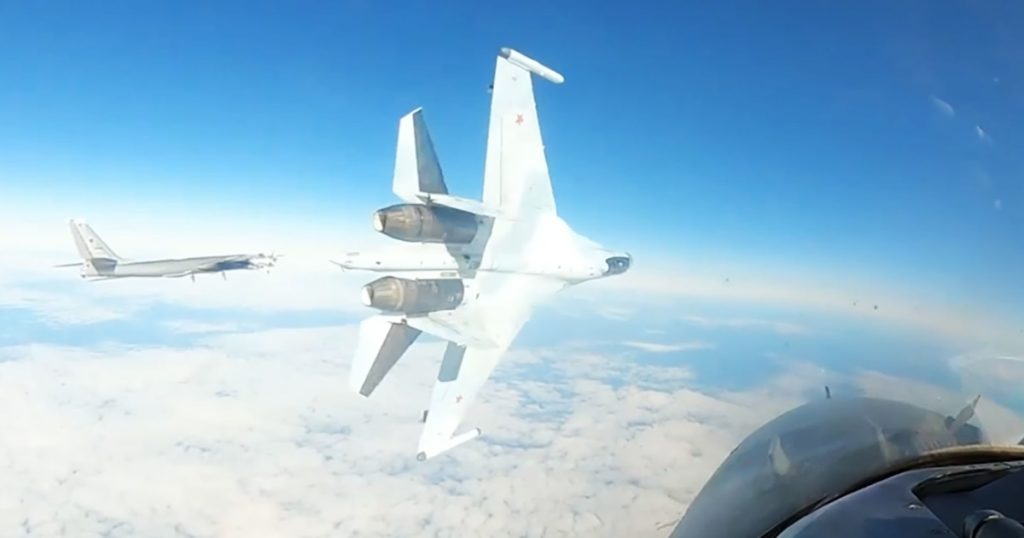The U.S. military recently released video footage showing an unsafe maneuver performed by a Russian fighter jet near Alaska during an intercept by the U.S. military. While the United States frequently conducts aerial intercepts of Russian aircraft in international airspace near Alaska, these intercepts are typically carried out in a safe and professional manner. However, this particular incident was deemed as unsafe and unprofessional by officials, with Air Force General Gregory Guillot stating that the conduct of the Russian Su-35 jet endangered everyone involved, and was not characteristic of a professional air force. The Russian embassy in Washington did not provide an immediate comment on the incident.
On September 23, the North American Aerospace Defense Command (NORAD) announced that it had detected and tracked four Russian military aircraft operating in the Alaska Air Defense Identification Zone. Despite this activity being labeled as regular and non-threatening by NORAD at the time, the subsequent unsafe maneuver by the Russian fighter jet near Alaska has raised concerns about the potential risks associated with these aerial intercepts. NORAD typically monitors and responds to Russian military aircraft in the region to ensure the security and defense of North American airspace, but incidents like this highlight the need for enhanced vigilance and communication between military forces.
The release of the video footage depicting the dangerous behavior of the Russian fighter jet near Alaska underscores the tensions and challenges present in the Arctic region, where strategic interests of major powers converge. The Arctic has increasingly become a theater for geopolitical competition, as countries like the United States, Russia, and others seek to assert their influence and control over key resources and territories in the region. Incidents like this serve as a reminder of the potential for miscalculation and escalation in this contested space, and highlight the importance of maintaining clear rules of engagement and communication between military forces operating in the region.
The U.S. military’s response to the unsafe maneuver by the Russian fighter jet near Alaska reflects its commitment to upholding international norms and ensuring the safety and security of its forces. General Guillot’s statement condemning the Russian conduct as unsafe and unprofessional signals a clear stance against provocative actions that could jeopardize the safety of military personnel and lead to unintended conflicts. The U.S. military’s ongoing monitoring and interception of Russian aircraft near Alaska demonstrate its readiness and capability to respond to potential threats and maintain deterrence in the region.
In the wake of this incident, there may be renewed calls for diplomatic engagement and de-escalation efforts between the United States and Russia to prevent further incidents of unsafe behavior in the Arctic. Both countries have a shared interest in avoiding conflicts and maintaining stability in the region, given its strategic importance and vast economic potential. Dialogue and cooperation between the two countries could help establish protocols for safe aerial encounters and reduce the risk of accidents or misunderstandings that could lead to greater tensions. The incident near Alaska serves as a stark reminder of the need for effective communication and mechanisms to prevent unintended confrontations between military forces in the Arctic.
Overall, the video release of the unsafe maneuver by the Russian fighter jet near Alaska highlights the complex dynamics and challenges inherent in military operations and encounters in the Arctic region. As major powers continue to assert their interests in this strategically significant area, the potential for friction and incidents like this remains a concern for global security. By promoting transparency, dialogue, and adherence to international norms, the United States and Russia can work together to mitigate risks and maintain stability in the Arctic, while ensuring the safety of military personnel and preventing escalation of tensions in the region.


